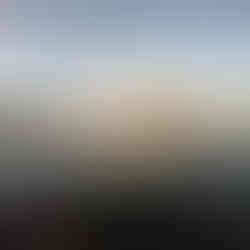(x+1)(y-2) = you
- julietertin

- Jun 7, 2016
- 3 min read

I did some BC running (buttcrack-of-dawn) this week in one of my favorite places in Minnesota: the Cuyuna mine pits. “Cuyuna”was coined by combining the name of its discoverer, Cuyler Adams, with his dog: Una the St. Bernard. When you’re self-reflecting, there’s no better setting than large uninhabited lakes.
These days it is a midwest mountain bike mecca, but when I was a little girl, Cuyuna was a wild, haunted place. Unkempt. Miles of steep stony ridges are leftover from mining companies that dug hundreds of feet into the earth for iron ore throughout the Mesabi Range.
This open-pit method leaves gigantic holes (and hills) in the landscape. The pits naturally filled with water over the last two decades to form calm aqua-tinted lakes with rusty shores.
My dad used to take me to rip lips (i.e. go fishing) and snorkel there. The water is perfectly clear; visibility is vast and deep. You can watch a loon spiral 30 feet to your left, leaving a trail of bubbles. There is no sand, no weeds, just a soft orange silt and flourescent green beds dotting the shore.
The worst part is the trees. The pits filled in while the trees were still rooted and growing. They stand and grasp at your feet, covered in undisturbed brown algae; they are a canopy to little schools of fish while bigger shadows lurk deeper.
Take a breath and dive down, kicking your fins until your lungs burn. You immediately find your skin goosebumpy and freezing in a teal
depth with zero movement. The black shadows are coming to snatch you down, 600 feet to the bottom.
Above the lakes, however, there are now 30 miles of wonderfully red single-track trails (none of it flat). It is a playground for bikers, divers, and trail runners. It is chock full of vistas and elevation and red shale.
What’s interesting to me is that this land (plumbed for its valuable parts but abandoned to become a dumping ground for dishwashers, mattresses and beer bottles) has been cultivated into a unique place that draws people in search of health and happiness. It has been scarred by industry, re-arranged, formed unnaturally, and excavated completely. But now, it is green and growing. On the surface it looks like like another Minnesota lake.
The noisy river is likely shallow. It is the still waters that run deep.
The deep, still waters of the mine pits have formed because it couldn’t have happened any other way. Those are some of the most meaningful words ever said to me. Try as I do to argue (on the surface there are seemingly-valid counterpoints, and it is a seemingly-trite phrase) they continue to hold water.
Consider all of the trivial details of the era that contributed to Cuyuna’s existence: current environmental trends, past and present economy, even the existence of our dear Cuyler Adams.
“It” is the sum of a billion details, none of which can be changed now.
Even the valuable band of iron ore and manganese that scars Crow Wing County did not choose to form there. That band wasn’t even considered valuable until 200 years ago, etc. It could not have happened any other way. The algebraic philosophy is solid: the variables that went into the equation created the answer.
Put in different variables (or change them) and you will get a different outcome, sure. The same is true for ourselves. Unfortunately, this algebra is not being done in pencil on scratch paper. What is done is done.
Perhaps it is not always the cause that is the key to solving the problem.
I think there are rare times that the consequence is the critical point at which to begin to cultivate beauty and health and happiness. The exact point at which to grow a landscape.
I think, too, even if it causes dismay – that it is important to remember the lurking shadows. Not to be hopeless but to be honest. We all carry, or bury, our variables.

All photos credited to Master Diver Brent Moulton













Comments